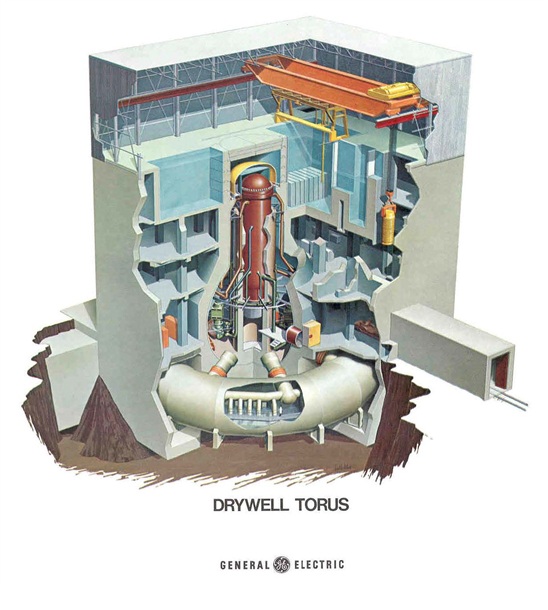The inspection will assess the potential of degraded paint inside a portion of the reactor containment at the DTE Electric-operated power plant to impede safety systems

Image: The torus of the Fermi 2 nuclear power plant in the US. Photo: courtesy of General Electric.
The US Nuclear Regulatory Commission has launched a special inspection at 1,170MW Fermi 2 nuclear power plant located in Newport, Southeast Michigan, US.
The inspection aims to assess if the degraded paint inside a portion of the reactor containment at the DTE Electric-operated power plant could affect certain safety systems in accident conditions.
The move follows the US NRC’s recent engineering inspection, which reported a deprivation in the paint inside the torus, a donut-shaped component of the reactor containment located below the reactor vessel.
The torus, which is filled with water, is designed to absorb energy from the reactor or supply water to safety systems during an accident.
According to the regulator, the torus’ loose paint chips could potentially impede the water flow to safety-related equipment at the time of an accident.
NRC to establish sequence of events related to torus’s degraded paint at the power plant
As part of the special inspection, the NRC’s five-person inspection team will establish a sequence of events related to degraded paint in the torus and will review the plant’s maintenance practices.
Additionally, the team will assess the overall response since the discovery of the condition.
NRC said in a statement: “The inspectors will provide their preliminary conclusions regarding the significance of the issue in a publicly available report to be released approximately 45 days following completion of the inspection. The plant continues to operate safely.”
Operational since 1988, the Fermi 2 power plant represents 30% of Michigan’s total nuclear generation capacity.
In 2016, NRC renewed the operating license of the Fermi 2 nuclear power plant for an additional 20 years through March 2045.
The power plant’s original operating license was scheduled to expire on 20 March 2025.
Located in about 25 miles (40.2km) northeast of Toledo, Ohio, the boiling-water reactor provides electricity to more than one million homes.
The nuclear facility features multiple levels of safety systems, all of which can be operated manually or automatically.
